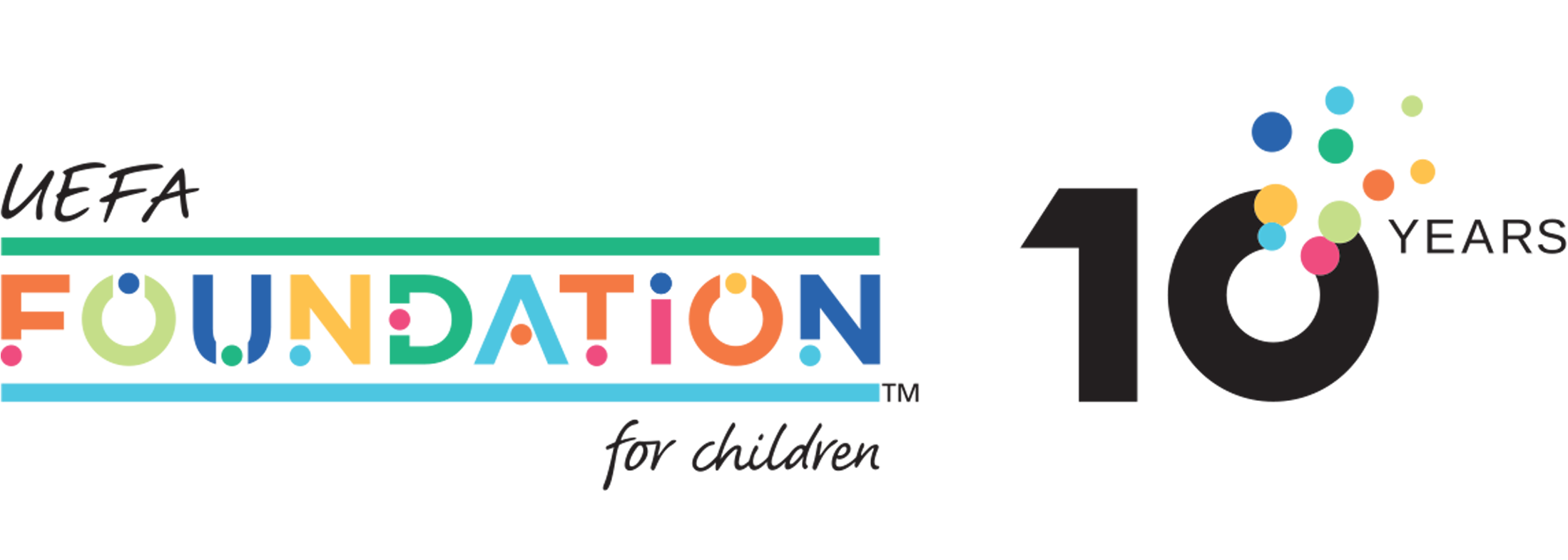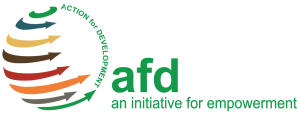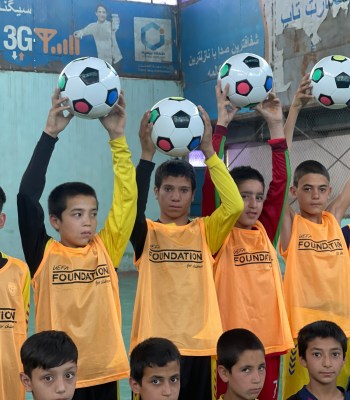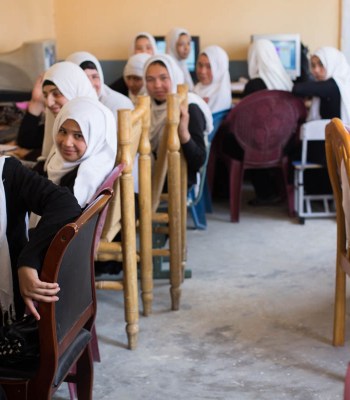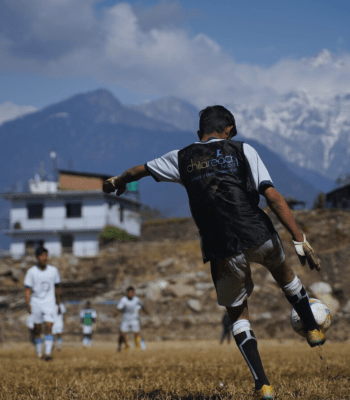Location and general information
 Access to Sport -
Access to Sport -  Personal development
Personal developmentContext
According to UNICEF 3.5 million Afghan children aged between 5 and 17 are missing out on school. Approximately 2.1 million 6 to 14-year-olds are involved in some form of child labour, often in jobs that are hazardous to their health and safety. They face a high risk of injury or death from road accidents, suicide bombings and explosions; they are often victims of verbal, physical and sexual abuse; they are exposed to concentrated air and noise pollution, and generally endure difficult living conditions. Many of these children are their families’ only breadwinners and their parents, most of whom are illiterate, feel they have no other choice but to put their children to work. As a result, these children have no opportunity to attend formal schools.
Street children back to school
Afghanistan is a country characterised by many ethnic divisions, which are often the root causes of violence. In this difficult context, sporting events such as football and cricket have proven to be successful ways in which to bring the population together and break down ethnic barriers. Sport, and football in particular, is an important channel for motivating children to create social change.
Project content
The UEFA Foundation for Children is supporting Action for Development (AfD) in Afghanistan for the second year in a row. The Street children back to school project was established in 2016 and invests in the social and educational development of these children, as well as ways to improve their overall level of health, to ensure they will become productive members of society. Thanks to its unique structure, the school allows these children to combine studies with their work.
The project also invests resources in empowering girls, who, until 2007, were banned from playing football in Afghanistan. Today, Kabul alone has 17 women's teams, although there is no training centre and female players still face resistance.
Project set-up
In October 2016 AfD founded its first school in one of the most populous districts in Kabul. In September 2018 new schools were opened in two other locations, one in the city centre and one in Khwaja Bughra district to the north, in the same building as the AfD health centre. A dry, secure football pitch has been rented, where children are taken twice a week to play football safely. The schools have seven women taking care of the teaching, cooking and coordinating and one male football coach.
Back-to-school activities
The Schools for Street Working Children project aims to reintegrate children into the formal school system. These children have lower-than-expected levels of skills and confidence for children of their age, which makes attending a formal school very difficult.
Awareness campaigns
One hundred families with children at the school will be involved in awareness-raising activities. Mothers will be taught about the importance of education, children’s hygiene, disease prevention and the dangers of drugs and prostitution. A special emphasis is placed on issues affecting young girls as they are often the most vulnerable of street children. Awareness campaigns will also reach out to the community elders and leaders of mosques.
Local development
Over 200 children have already been enrolled in the project but there is scope to increase this number. The children need to commit to attending the training sessions. Priority is given to orphans and children who have a disabled parent and 50% of the participants must be girls.
Regular health check-ups are to be carried out with the support of the AfD health centre personnel and regular support is provided by a local psychologist.
The Schools for Street Working Children project offers street children the opportunity to play football and sport in general. Currently over 40 children play football. We are working with families who, for cultural reasons, believe their daughters should not play football as it is typically a male sport, to educate them on the importance of sport, and football in particular, in building self-esteem, team building capability and strength overall. Groups are formed according to age and where necessary by gender, and each group has two sessions each week. The school’s tutoring activities are held before or after the sports activities.
Objectives
The aim of the project is to improve the prospects of Kabul’s street working children, assisting them in their social, educational and physical development, and investing in them to ensure they will become productive members of the society.
The non-formal education approach allows the children to learn through games and activities and enables them to continue with their current activities. By playing football they take back their right to be children.
The objectives of the project are to:
-
- continue to increase the number of children attending the schools for street children;
- provide educational support for street children using innovative tools;
- provide basic nutritional support and health services, physical and psychological, for children in need;
- promote children’s physical development and offer opportunities to learn physical skills through football training and sport in general;
- train educators to use a creative teaching method and train the football coach to engage children, their families and the community by building enthusiasm for football;
- in the longer term, reduce the number of illiterate street children through a sustainable approach to education and training;
- create awareness of the value of education among families and the local community;
- build synergies with national schools to make it easier for some of these boys and girls to be reintegrated into the formal system.
Project activities
Expected results
- Street children are able to read, write and do calculations; they also learn to draw.
- They are aware of their rights and duties and of the concepts of peace and human rights.
- Street children are in better health and do not have nutritional deficiencies.
- More children are enrolled in football training.
- Trainers are trained to be able to teach street children.
- More children are enrolled in the formal school system, and barriers, such as children’s lack of confidence and readiness, are broken down.
- Academically stronger children are given financial support to continue their studies.
